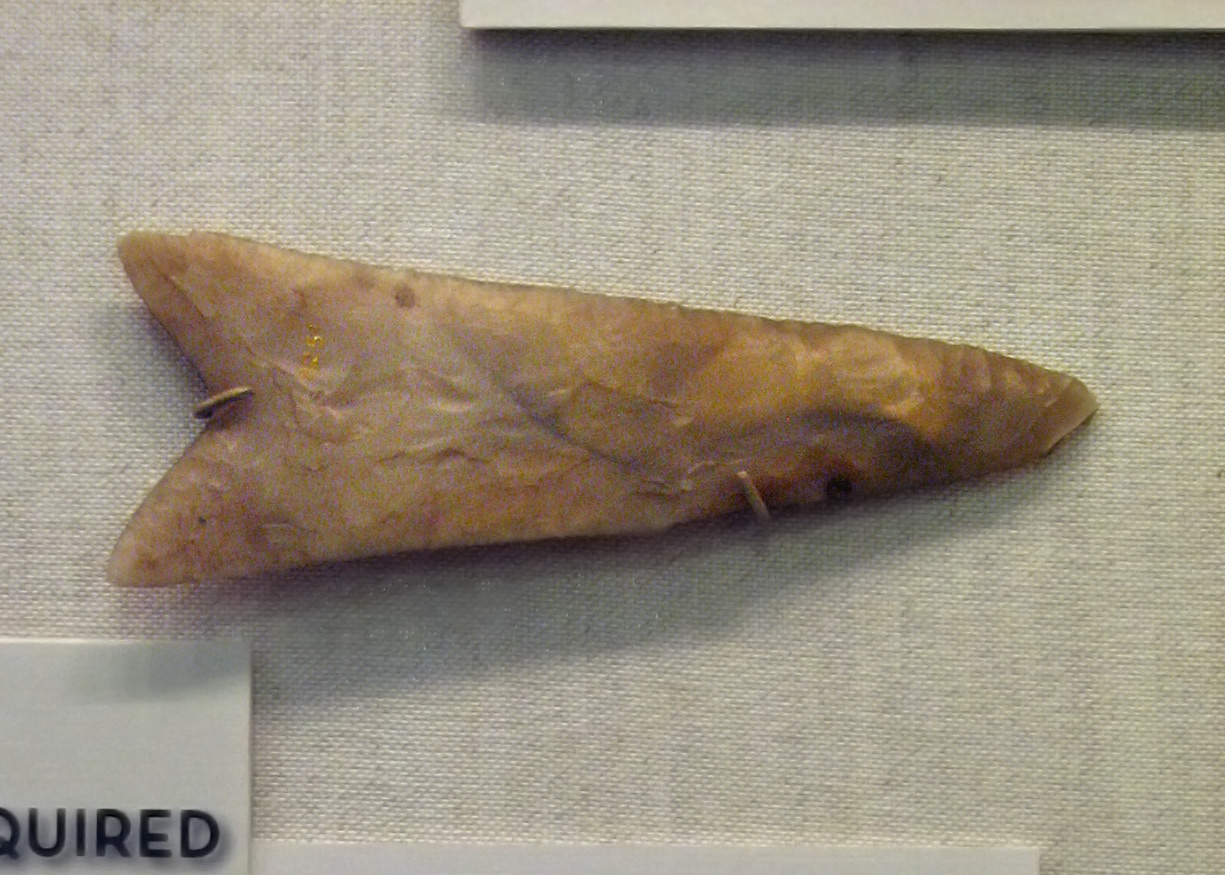
Flint
Pre-dynastic Period, Naqada II, ca. 4000 BCE
Purchased in Cairo, 1920, OIM 11251
Photo ©Joan Ann Lansberry, 2010
 Flint Pre-dynastic Period, Naqada II, ca. 4000 BCE Purchased in Cairo, 1920, OIM 11251 Photo ©Joan Ann Lansberry, 2010 |
|
(From info card) "The knife was perhaps originally associated with cutting umblical cords at birth. Examples of such knives have been found in burials rather than in embalmer's workshops, which may indicate that the knife was associated with rejuvenation."
(From _The PSŠ-KF and the 'Opening of the Mouth' Ceremony: a Ritual of Birth and Rebirth_, by Ann Macy Roth, Journal of Egyptian Archaeology 78, 1992):
"The umblical cord as the snake of chaos" (called either Apophis or Apep) "In vignettes attached to Chapters 7, 15B and 39 of the Book of the Dead, the deceased is shown spearing Apophis, sometimes with a stick that is forked at the tip. This action is comparable to that of the god Seth, who stands at the prow of the sun bark and attacks the Apophis snake every morning so that the sun can rise (be born). Seth's role as a divider of the undifferentiated (and hence uncreated and chaotic) snake, Apophis, into two different (and therefore extant) parts may be reflected by his forked tail. The fork of the psš-kf thus acquires still another explanation: a forked stick is used to attack snakes, and the umblical cord represents a snake, the primeval snake of chaos, which must be divided in order for creation (birth) to occur. Like the psš-kf, the forked stick is not only the divider, but is itself divided, as a symbolic represention of its function." |


